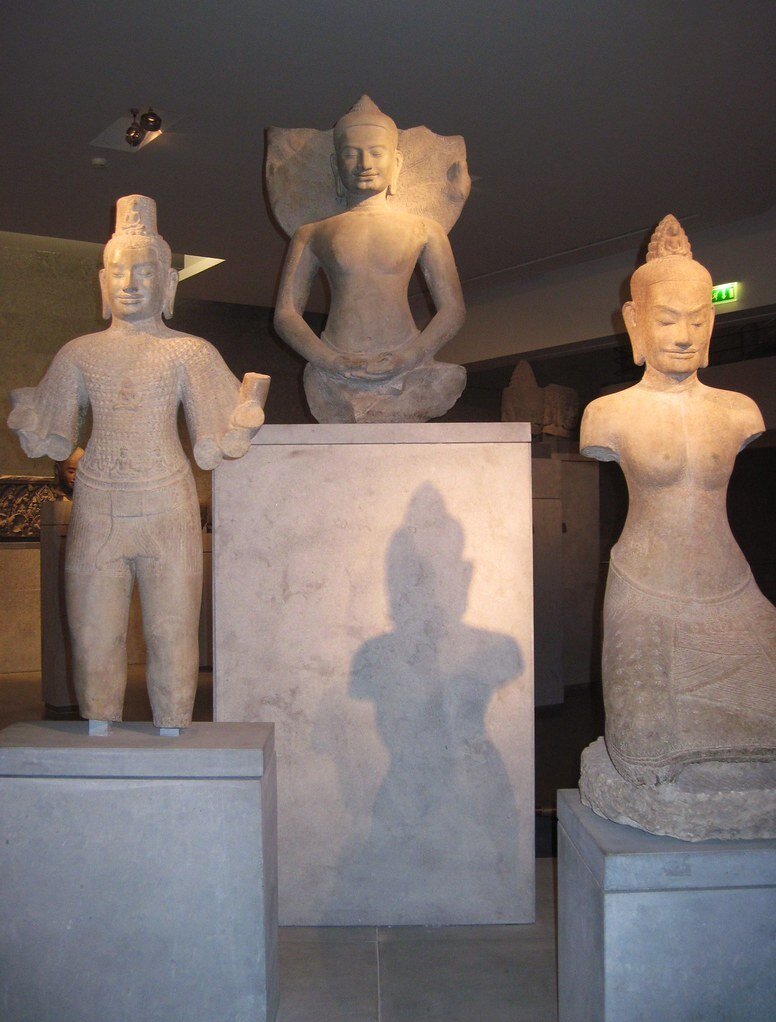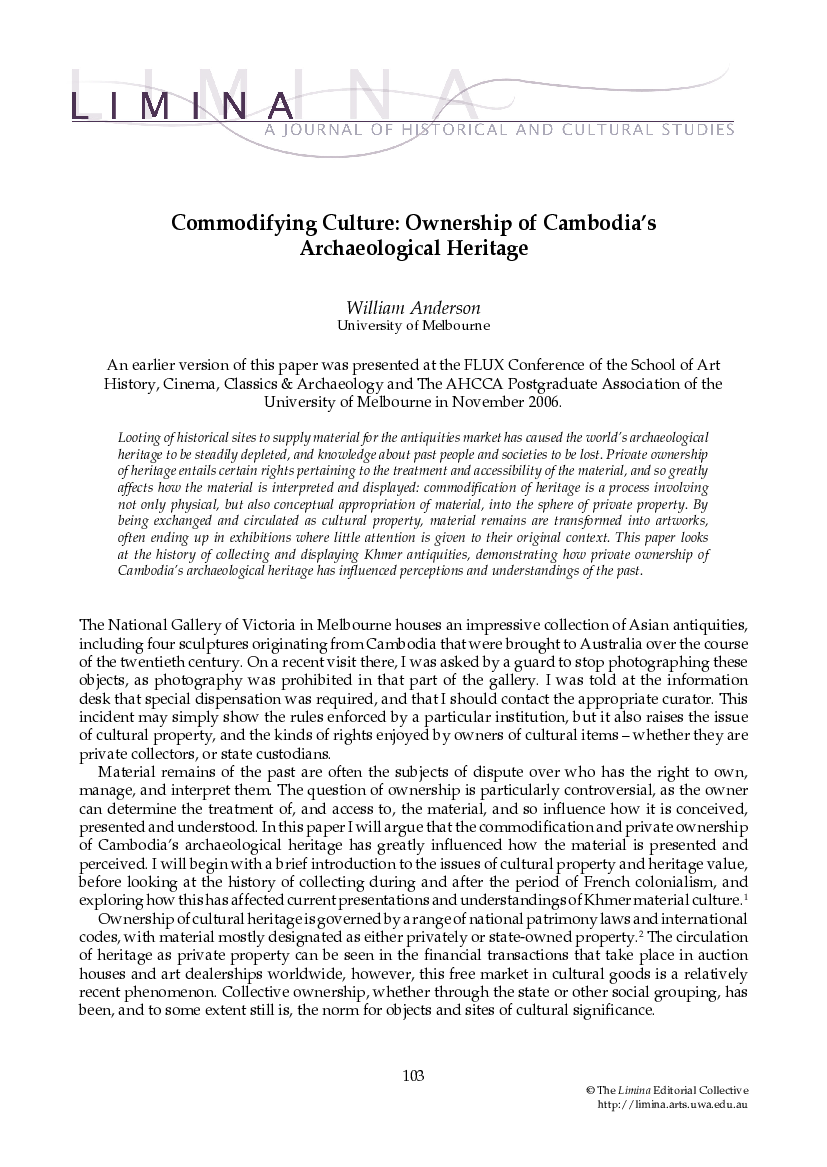Commodifying Culture: Ownership of Cambodia’s Archaeological Heritage
by William Anderson
The controversial matter of Khmer antiquities appropriation by private collectors and foreign museums.

- Publication
- Limina, Journal of Historical and Cultural Studies, Vol. 13, pp 103-113
- Published
- 2007
- Author
- William Anderson
- Pages
- 10
pdf 328.4 KB
“From the 1920s, Angkorian sculpture became more common in museums and collections worldwide, but it was private collectors rather than state authorities who were increasingly responsible for obtaining the material. Wealthy art magnates bought Asian antiquities for their collections, often using mediators who procured and exported objects from the Far East. Angkor was becoming a popular tourist destination, especially for colonials living in Saigon or Bangkok, who would travel there in convoys, stay at the temples for a day or two, and return with pieces of sculpture, which were almost invariably sold or bequeathed to museums in their home states.
“Even as Cambodia was experiencing upheaval and war in the second half of the twentieth century, the ethics of collecting Khmer antiquities were rarely questioned. An exhibition held in the United States in 1969 called Ancient Cambodian Sculpture, included items taken from Angkor both before and after the French colonial period (which ended in 1953). The catalogue’s preface gives some idea of the carefree attitude to acquiring Angkorian art. After the Second World War, it says, ‘the noticeably improved guest facilities at Angkor are material evidence of the growing influx of visitors from all affluent areas of the world. With increasing familiarity came galloping “collectivitis”, and hence the possibility of an exhibition of Cambodian sculpture drawn almost wholly from American collections’.”
As recently as in 1988, notes the author, “an exhibition held in Germany in 1988 called Thai and Cambodian Sculpture from the Sixth to the Fourteenth Century, included dozens of Khmer antiquities, almost none of which was accompanied by any information about their origins, or who was lending them.The exhibition was supported by Sotheby’s auction house, and is an example of how display and publication is used to generate legitimacy and financial value for unprovenanced antiquities.”
This form of ‘cultural appropriation’, concludes the author, happens in the name of ‘world heritage’, where in fact ‘material is privatised into an exchangeable commodity, which through being circulated as property, is then re-individualised and sacralised within its new cultural sphere, often a museum or art gallery.’
Photo: Cambodian Art at Musée Guimet, Paris.
Tags: looting, art collections, sculpture, heritage conservation
About the Author

William Anderson
William Anderson is a professional archaeologist who works as Project Manager with Dr Vincent Clark & Associates, a Melbourne-based cultural heritage consultancy.
A cultural heritage advisor, he has managed large-scale cultural heritage projects, overseeing and reporting on fieldwork, developing management recommendations, consulting with community groups and funders from the public and private sector and translating fieldwork and analysis into research outputs.
William Anderson has worked as a lecturer, tutor and research assistant at the University of Melbourne, where he is an honorary research fellow, and has been Convenor of the Archaeology Reading Group since 2008.

